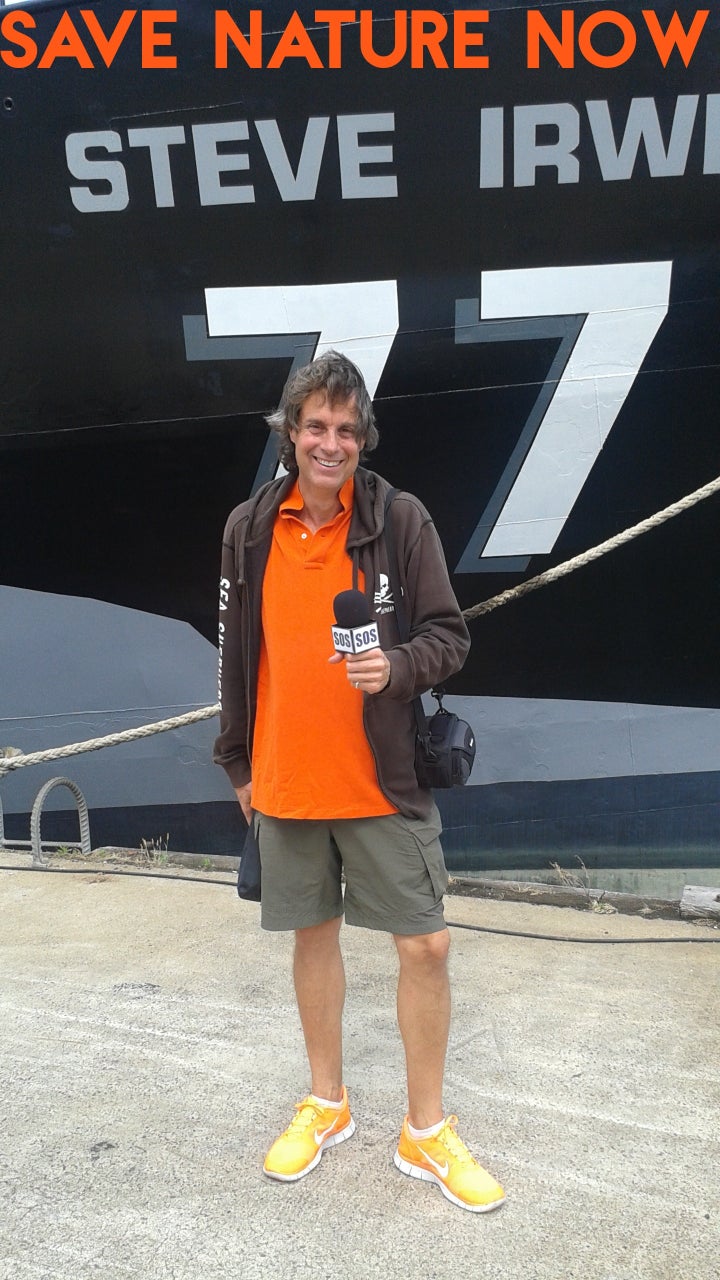It is a classic David versus Goliath fight. The stakes are the race to extract $AUD110 billion of climate-altering fossil fuels at a depth of 8,200 feet in the Great Australian Bight Marine National Park. At risk is the largest southern right whale nursery on the globe and its priceless array of biodiversity as well as civilization as we know it.
Conservationists from the Bob Brown Foundation, the Wilderness Society, an elder from Mirning Aboriginal Peoples and Sea Shepherd Conservation Society are aboard Sea Shepherd’s flagship The Steve Irwin steaming towards the proposed oil and gas wells. Their mission is to bring national and international attention to the vital importance of protecting the Great Australian Bight an invaluable ecological global jewel.
On December 12, 2015, all 195 countries ratified the final wording for the Paris Agreement the first-ever, universal, legally binding global climate deal. The target is for Earth to remain between 1.5C and 2C above pre-Industrial times. It is bold and most necessary.
All nations, particularly the industrial ones, must pulse down on burning heat-trapping fossil fuels. Opening new sub-sea oil and gas fields off Australia is unacceptable in accordance with the world agreed upon temperature targets.
Over the previous four months, my colleagues have documented nature collapsing under the sea and on land in Australia from rising temperatures.
In late May, my colleagues from James Cook University in Australia revealed the enormous extent of the death of the Great Barrier Reef from an overheated Pacific Ocean. Fifty percent of the areas sampled along the northern 600 miles, which has escaped the 1998 and 2002 coral bleaching events, were dead. It is an unprecedented die-off. Coral reefs are home to at least one million forms of sea life, including sharks, whales, dolphins, porpoises, sea turtles and so many other forms of marine life that depend upon this crucial habitat and nursery grounds. When corals die, the sea life dies.
In early July, along a 1,200-mile stretch of Western Australia’s Indian Ocean, my colleagues reported that the kelp forests collapsed from a 2011 marine heat wave 2.5C above the long-term maximum average ― there is no sign of recovery whatsoever. Kelp forests are essential habitat for hundreds of unique species. When kelp forests die, so too do all their inhabitants.
In mid July, 22,000 acres of mangrove forests in Queensland and the Northern Territory along the Gulf of Carpentaria collapsed from a prolonged drought ― unprecedented mortality. Mangroves guard the shoreline, holding soil to the land and providing crucial habitat for commercial prawn, crabs and finfish like barramundi. Those populations are crashing. The next time a cyclone rips into northeastern Australia, thousands of tons of shoreline soils will be washed into the sea.
The oceans, according to my colleagues at Lawrence Livermore National Laboratory, have absorbed 300 zeta joules of heat from burning fossil fuels. Since 1997, 150 of those 300 zeta joules have accumulated ― the equivalent energy of one Hiroshima-style atomic bomb detonating every second for 75 straight years.
The heat stored in the ocean has disrupted cold currents from rising and carrying iron and nitrogen essential to grow phytoplankton, the basis of the entire marine food web. It, along with blue green bacteria, prochlorococcus, provides 7.4 billion people almost two out of every three breaths of oxygen. The oceans are missing 40 percent of the phytoplankton because they have absorbed so much heat from burning fossil fuels.
The whales and their flocculent fecal plumes (or poo) rich in iron and nitrogen are regrowing the missing phytoplankton.
The whales are helping us breathe by providing oxygen.
My colleagues from Scripps Institute have shown that burning fossil fuels since the mid-1980s has robbed approximately 600 oxygen molecules per million oxygen molecules from the atmosphere. While that is not enough to disrupt human daytime activity, it is enough to begin impinging upon sleep patterns. Between 50 and 70 million Americans suffer from sleep disorders.
BP is proposing to drill inside a marine national park off the coast of South Australia in seas deeper, rougher and more remote than the BP Deepwater Horizon disaster in the Gulf of Mexico.
Burning the Great Australian Bight Marine National Park oil and gas reserves is a prescription for an epic irreversible global catastrophe. It would elevate Earth’s global temperature to the top end of the Paris Agreement or 2C. According to my colleague Professor James Hansen, Columbia University, NY, the ice sheets are losing mass faster and faster, with a doubling time of about 10 years. That means soon after mid century sea levels would rise by six feet. The consequences are unimaginable, as all coastal cities would become dysfunctional.
In addition to the vicious and unforgiving Indian Ocean environment where BP intends to drill for oil and gas - on July 25, 2016 an earthquake registering 5.9 hit along the Western Indian Antarctic Ridge approximately 900 miles south of the two proposed oil and gas fields in the Great Australian Bight. Drilling there is risky and amoral.
On board The Steve Irwin, Dr Bob Brown, environmentalist, former Senator, and former Parliamentary Leader of the Australian Greens, told me, “BPs massive oil spill in the Gulf of Mexico has so far cost $USD56 billion. When Australians get to know about this dangerous proposal bringing the same risk to the pristine water of the Great Australian Bight they will be outraged. The Bight is one of the world’s greatest whale harbors, an oil spill by BP would threaten everything and extend the threat to the Victorian coastline as well as the Tarkine coast of King Island in Tasmania.”
A business as usual model runs a deadly risk of polluting the longest ice-free coastline in the southern hemisphere, home to critically endangered southern bluefin tunas, leatherback turtles and great white sharks, endangered blue whales, sperms, humpbacks, minkes, southern right whales and so many other glorious creatures. And on the other hand, burning 1.9 billion barrels of Great Australian Bight oil and gas would inundate all coastal cities. Short-term fossil fuel profits at the expense of the human race are genocide.

Earth Doctor Reese Halter is a distinguished biologist, broadcaster and author.
